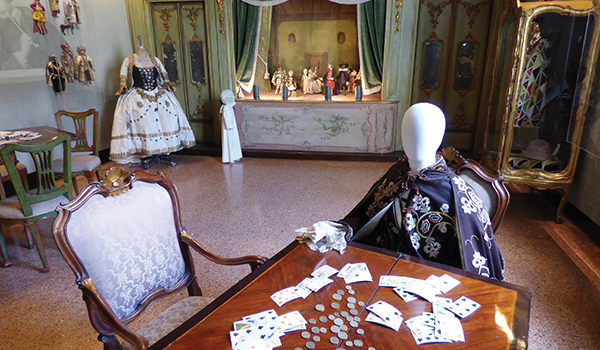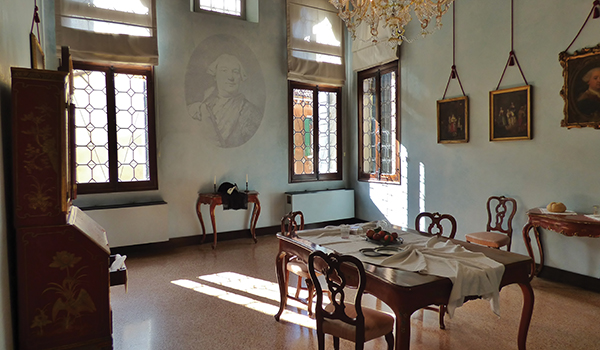The influence Carlo Goldoni had on Italian theatre is immeasurable, and his museum is not to be missed.
The palazzo is hard to find. The land entrance is in an alley so narrow that you must consider the width of your umbrella before venturing there in the rain. The water entrance is easier to locate, on the tiny Rio de San Tomà canal in Venice, but you’ll need a gondola. The ground floor is the portego, a traditional Venetian entry hall, with worn terracotta paving leading to an old, three-arched stone staircase. You feel the early 15th-century origins of the house here; but at the top of the stairs, at the piano nobile, you enter the 18th century, and the world of Italy’s greatest comic playwright, Carlo Goldoni.
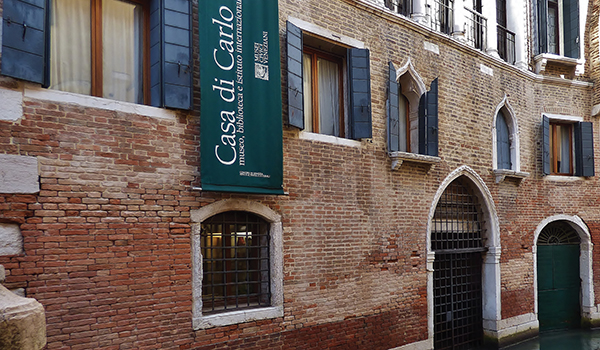
Goldoni was born here in 1707. In one room off the grand reception hall, there is the figure of a small child, fashioned perhaps from plaster. He stands just below the stage of a large puppet theatre, looking up at the figures in the limelight: Pantalone, Brighella, Truffaldino, Smeraldina, Il Dottore, and Clarice. They are all characters from Goldoni’s most famous play, Il Servitore di Due Padroni – The Servant of Two Masters.
In his memoirs, written late in life, Goldoni says that when he was small, his father Giulio made a puppet theatre for him in this house, and inspired his lifelong passion for the stage. Some academics, perversely preferring fact over a good story, have questioned his recollection. Happily, the curators of the Casa di Carlo Goldoni museum installed this diorama anyway, (with a genuine 18th-century proscenium and antique puppets), citing the undoubted ‘symbolic’ truth it represents.
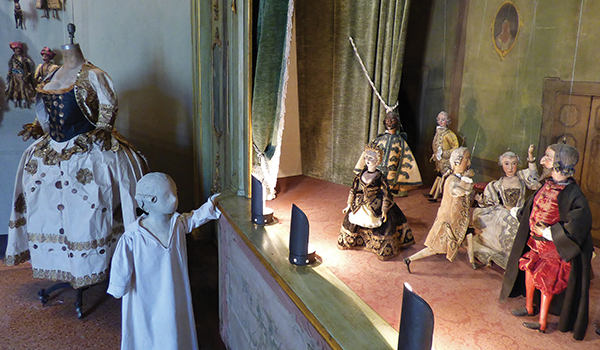
However indulgent he may have been, Carlo’s father still insisted on a respectable career. Although Carlo was an unruly student who was expelled from school at least once, and on another occasion fled school with a troupe of itinerant actors, he finally took a law degree at Padua. His legal ability and geniality gained him success, and he even became the Genoese Consul in Venice. But the theatre called and, at the age of twenty-seven, he jettisoned his career in law and joined the San Samuele Theatre in Venice, composing comic pieces.
Before Goldoni’s career changed everything (which it did), the two most popular genres of Italian theatre were melodramma and Commedia dell’Arte. Melodramma, (as distinct from the English word ‘melodrama’), was musical drama – opera, in fact. Commedia dell’Arte performances were comedies using stock characters and unscripted, sketched-out plots, presented by actors skilled in improvisation.
Many actors wore masks, which identified the character, or type of character, they represented. Goldoni, who was not a man to underestimate his talents, soon tired of sketching out the threadbare plots with which the actors were comfortable, and began to write fully scripted plays. Since they were consistently funnier than the sketch pieces, they became quite popular, to the chagrin of the improvisers. Then he took a shocking step: he suggested dispensing with the time-honoured masks of comedy as well!
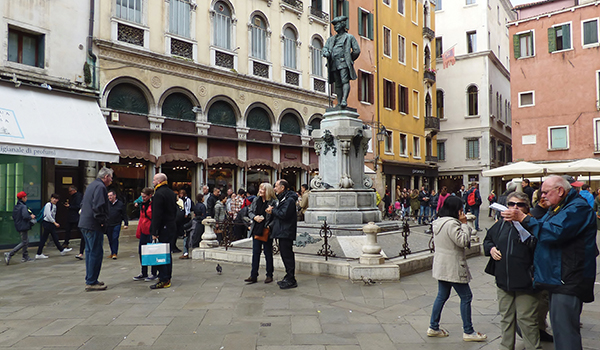
Images: Patricia Gartman
In his memoirs, Goldoni identified what he called the four essential masks of Italian Commedia: “The basis of the comic humour is always Pantaloon, a Venetian merchant; the Doctor, a Bolognese jurisconsult (a legal expert); and Brighella and Harlequin, Bergamask valets.” (Bergamask means “from Bergamo”.)
Other characters, especially females, were not masked. Goldoni acknowledged the skill of the traditional players, but insisted: “The actor must in our days possess a soul; and the soul under a mask is like a fire under ashes. These were the reasons which induced me to endeavour the reform of the Italian theatre; and to supply the place of farces with comedies.”
And supply comedies he did: one hundred and thirty-seven comic plays, sixteen tragicomedies, libretti for forty-nine comic operas, and many more miscellaneous pieces. This astonishing output of brilliant work did indeed set Italian theatre on a new course: that of portraying peoples’ lives and manners believably.
The delightful statue of Goldoni in Campo San Bartolomeo depicts a cheerful man-about-town, and his ability to acquire friends and patrons wherever he went attests to his affability. He was persuaded to move to Paris in 1762, to manage the Théâtre Italien. When that job proved uncongenial, he somehow became the Italian tutor to Marie Adélaïde, daughter of Louis XV, at Versailles; and when he lost the sight of his left eye, he was given a royal pension.
The late 18th century, however, was not the best of times to be a client of the royal family of France. The French revolution ended his pension, and he died nearly penniless in 1793. Even after death, though, he found an unexpected friend. The poet André Chénier convinced the revolutionary convention to restore Goldoni’s pension to his wife of many years: “She is old,” pleaded Chénier, “and her husband has left her no heritage save his illustrious name, his virtues, and his poverty.”
Part of Goldoni’s heritage to us is preserved in the small, charming palazzo down a narrow alley along the Rio de San Tomà canal in Venice. His plays are there, too: maskless, featureless mannequins form ghostly vignettes of famous scenes. If you love theatre, it’s worth the search, even in the rain.
